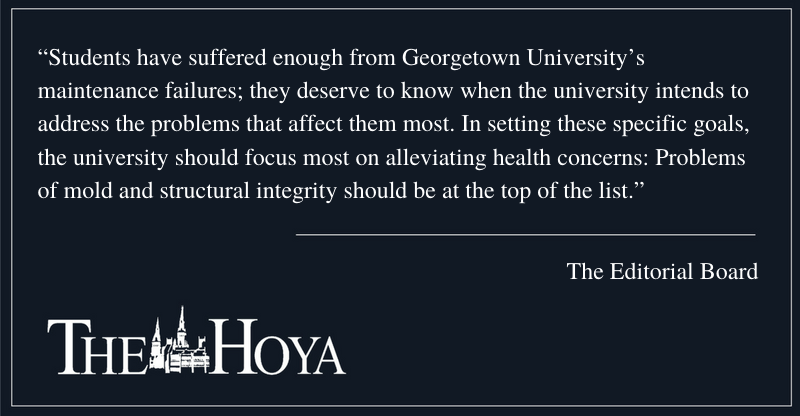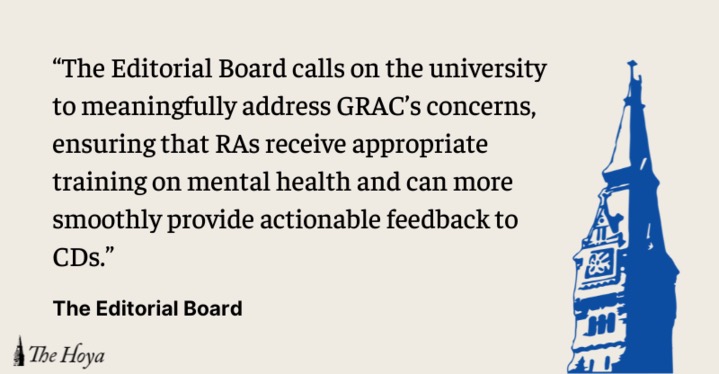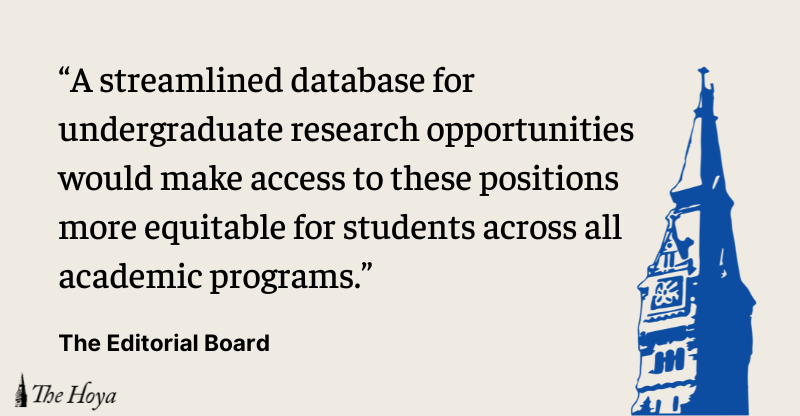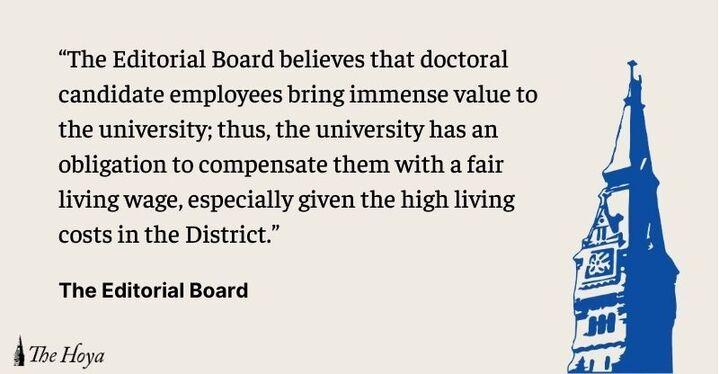Georgetown University’s facilities and maintenance problems reached a peak last semester with pervasive mold outbreaks throughout campus and structural concerns with the Alumni Square roofs. This year has also seen a fair share of issues: The Harbin Hall elevator malfunctioned, trapping a student inside, and LXR Hall experienced two weeks of intermittent hot water shortages.
To address its myriad facilities problems, Georgetown allocated $75 million in February to deferred maintenance, aiming to repair existing infrastructure instead of constructing new buildings. Deferred maintenance includes “most maintenance, repair, and building renewal projects,” according to Georgetown’s website. Since then, the university has released no plan or budget on the allocation of the $75 million fund.
The fund is much needed, especially considering the health and safety consequences posed by faulty facilities. After repeated reports of mold, students experienced respiratory problems; problems with Alumni Square roofs’ structural integrity could have threatened students’ lives.
Investing resources in long-term maintenance is vital to restore the university’s infrastructure and assuage student concerns. But if Georgetown wants to demonstrate to disillusioned students that facilities issues are being addressed, the university must be transparent about how the deferred maintenance funding is being spent.
Nine months after the funding was announced, little visible progress seems to have been made. The university completed repairs of Alumni Square roofs and renovated the complex this year, but Georgetown has not informed students of any other ongoing or planned improvements using the deferred maintenance fund.
To the university’s credit, it has prioritized deferred maintenance and has plans to renovate Village C. Georgetown’s 2019 Capital Improvement Plan identifies “High Priority Deferred Maintenance” as a top goal. But this vague prioritization is not enough.
Students have suffered enough from Georgetown’s maintenance failures; they deserve to know when the university intends to address the problems that affect them most. In setting these specific goals, the university should focus most on alleviating health concerns: Problems of mold and structural integrity should be at the top of the list.
After setting its priorities, the university should publish its to-do list along with a timeline so students can hold the university accountable should it fail to meet its goals. This way, students can ensure the fund is put to good use by voicing their concerns and providing constructive criticism if they disagree with Georgetown’s priorities.
Even when the university has renovation plans, such plans are not publicized: Georgetown is planning renovations of Village C next year, according to a university spokesperson, but did not publicly announce this effort. Though the renovation was included in the Capital Improvement Plan, no details are available, and the plan itself is not readily available to the public.
“In 2020, Village C, a more than 650-room residence hall built in 1987, will receive major renovations over the next two summers, including exterior waterproofing, improvements to the HVAC and interior renovations,” the spokesperson wrote in an email to The Hoya.
Despite the significant renovation plan, little information is publicly available about the upcoming Village C renovations. Georgetown should take a more proactive approach. As soon as large renovation projects are decided, the university should announce the timeline and scope of the project through universitywide emails. Students should not be expected to dig deep into university archives to find out about campus renovations.
Increased transparency is not only necessary for students, but also beneficial for the university. As a result of Georgetown’s continued failures in facilities and maintenance, students are understandably distrustful of the university’s promises. By releasing more information, Georgetown can signal it is truly committed to solving facilities issues.
After years of inaction, students undoubtedly welcomed the news of the $75 million deferred maintenance fund. The next step for Georgetown is to release plans for its facilities projects so students can rest assured knowing the investment is being effectively used to resolve their concerns.
The Hoya’s editorial board is composed of six students and chaired by the opinion editor. Editorials reflect only the beliefs of a majority of the board and are not representative of The Hoya or any individual member of the board.














